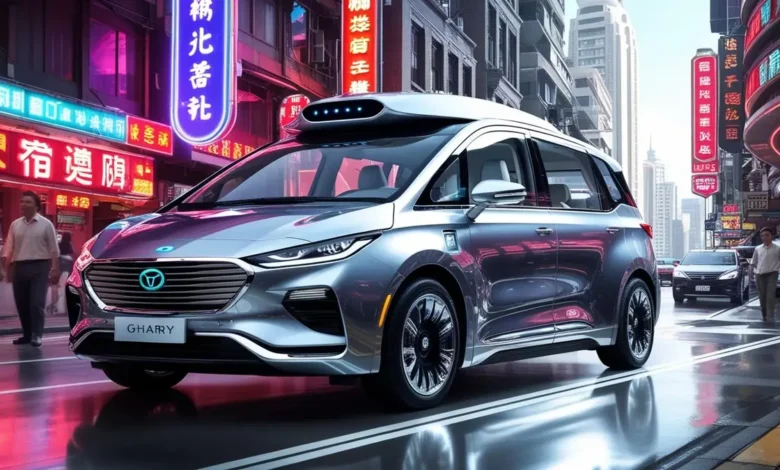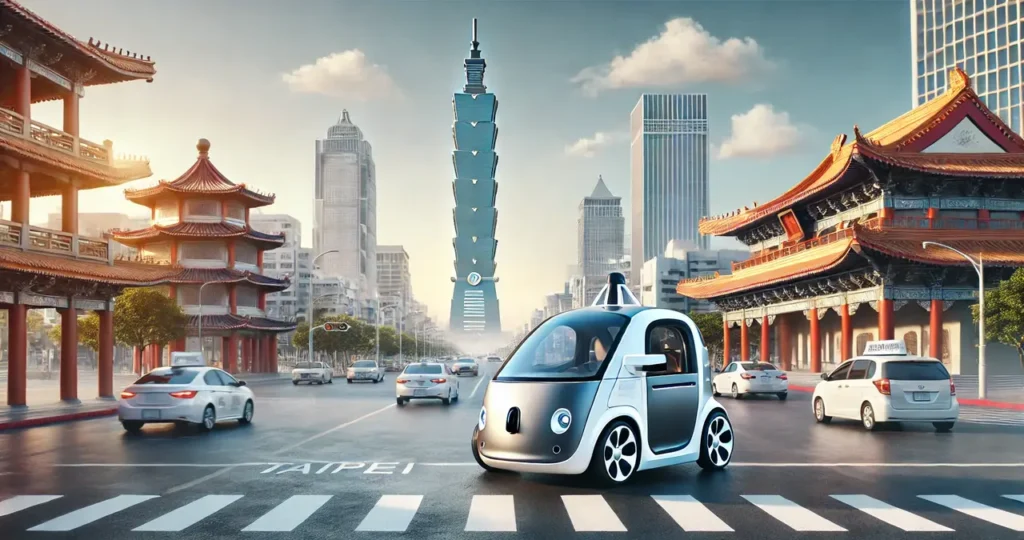Self-Driving Gharry: A Glimpse into the Future of Autonomous Heritage Vehicles

The world of transportation is undergoing a seismic shift, with autonomous vehicles taking center stage. Technology is reshaping how we move people and goods, from self-driving cars to automated delivery drones. But what if this cutting-edge innovation could be applied to something deeply rooted in history and culture? Enter the Self-Driving Gharry—a fascinating fusion of tradition and modernity that promises to revolutionize mobility while preserving heritage.
In this article, we’ll explore the concept of the Self-Driving Gharry, its potential impact on urban and rural transportation, its challenges, and why it could be the key to a sustainable and culturally rich future.
What is a Gharry?

Self-Driving Gharry Before discussing self-driving vehicles, it’s essential to understand what a gharry is. A gharry is a traditional horse-drawn carriage often used for transportation in various parts of the world, particularly in South Asia, the Middle East, and some European regions. These carriages symbolize cultural heritage, often associated with historical landmarks, tourism, and local commuting.
Gharries are not just vehicles; they are a testament to the craftsmanship and traditions of the past. However, as urbanization and modernization have accelerated, the use of gharries has declined, leaving them primarily as tourist attractions or relics of a bygone era.
The Birth of the Self-Driving Gharry
The concept of a Self-Driving Gharry is born out of the desire to preserve cultural heritage while embracing technological advancements. By integrating autonomous driving technology into traditional gharries, we can create a vehicle that honors the past while addressing the present and future needs.
How Does a Self-Driving Gharry Work?
A Self-Driving Gharry combines the classic design of a traditional carriage with state-of-the-art autonomous technology. Here’s how it works:
- Autonomous Navigation System: Equipped with sensors, cameras, and LiDAR technology, the Self-Driving Gharry can navigate streets, avoid obstacles, and follow traffic rules without human intervention.
- Electric Propulsion: Instead of relying on horses, the Gharry is powered by an electric motor, making it eco-friendly and sustainable.
- AI-Powered Control: Artificial intelligence algorithms process data from the sensors to make real-time decisions, ensuring a safe and smooth ride.
- Passenger Interface: A user-friendly interface allows passengers to input destinations, adjust settings, and access information about the journey.
Why the Self-Driving Gharry Matters
The Self-Driving Gharry is more than just a novelty; it has the potential to address several pressing issues in transportation and cultural preservation.
1. Preserving Cultural Heritage
In many regions, gharries are integral to local culture and history. Modernizing these vehicles can keep them relevant and ensure that future generations can experience and appreciate their significance.
2. Sustainable Urban Mobility
Self-driving gharries offer a green alternative to traditional vehicles, with zero emissions and energy-efficient electric motors. They can help reduce traffic congestion and pollution in urban areas.
3. Tourism and Economic Growth
Self-Driving Gharries can become a major tourist attraction, offering a unique blend of history and technology. This can boost local economies by creating jobs and attracting visitors.
4. Accessibility and Inclusivity
Autonomous vehicles can provide transportation solutions for people who cannot drive, such as the elderly or disabled. Self-Driving Gharries can be designed to accommodate diverse needs, making mobility more inclusive.
Applications of Self-Driving Gharries
The versatility of Self-Driving Gharries makes them suitable for a wide range of applications:
1. Urban Commuting
In crowded cities, Self-Driving Gharries can serve as an efficient and eco-friendly mode of transportation for short distances.
2. Tourism
Imagine exploring a historic city in a Self-Driving Gharry that narrates the history of landmarks as you pass by. This immersive experience can redefine tourism.
3. Rural Connectivity
In rural areas with limited public transportation, Self-Driving Gharries can provide a reliable and affordable way to connect communities.
4. Event Transportation
From weddings to cultural festivals, Self-Driving Gharries can add a touch of elegance and innovation to special events.
Challenges and Considerations
While the concept of a Self-Driving Gharry is exciting, it’s not without its challenges:
1. Technological Limitations
Autonomous technology is still evolving, and ensuring the safety and reliability of Self-Driving barrels will require significant advancements.
2. Regulatory Hurdles
Governments and regulatory bodies will need to establish guidelines and standards for the operation of autonomous vehicles, especially in culturally sensitive areas.
3. Public Acceptance
Convincing people to embrace a blend of tradition and technology may take time. Public awareness campaigns and demonstrations will be crucial.
4. Cost and Infrastructure
Developing and deploying Self-Driving barrels will require substantial technology, infrastructure, and maintenance investment.
The Future of Self-Driving Gharries
The Self-Driving Gharry represents a bold vision for the future—where technology and tradition coexist harmoniously. As autonomous technology advances, we can expect to see more innovative applications of this concept.
Potential Developments:
- Customizable Designs: Self-Driving Gharries could be tailored to reflect the cultural aesthetics of different regions.
- Integration with Smart Cities: These vehicles could be integrated into innovative city ecosystems, communicating with traffic systems and other autonomous vehicles.
- Expansion to Other Heritage Vehicles: The success of Self-Driving Gharries could inspire similar projects for other traditional vehicles, such as rickshaws or tuk-tuks.
Conclusion
The Self-Driving Gharry is more than just a vehicle; it symbolizes how innovation can breathe new life into tradition. By combining the charm of a historic carriage with the efficiency of autonomous technology, we can create a transportation solution that is sustainable, inclusive, and culturally significant.
As we look to the future, the Self-Driving Gharry offers a glimpse into a world where the past and present unite to shape a better tomorrow. Whether navigating the bustling streets of a modern city or preserving the heritage of a rural village, this unique vehicle has the potential to transform the way we move—and how we connect with our history.
So, the next time you hear the clip-clop of hooves, imagine a future where that sound is replaced by the quiet hum of an electric motor, and a Self-Driving Gharry glides effortlessly into the horizon, carrying with it the legacy of the past and the promise of the future.
Meta Description: Discover the Self-Driving Gharry—a revolutionary blend of tradition and technology. Learn how autonomous heritage vehicles are shaping the future of sustainable and culturally rich transportation.
Keywords: Self-Driving Gharry, autonomous heritage vehicles, sustainable transportation, cultural preservation, future of mobility, electric Gharry, autonomous technology, smart cities, tourism innovation.
FAQS
What is a Self-Driving Gharry?
A Self-Driving Gharry is a modernized version of the traditional horse-drawn carriage equipped with autonomous driving technology. It combines the classic design and cultural significance of a gharry with advanced features like electric propulsion, AI-powered navigation, and sensor-based obstacle detection to create a sustainable and innovative mode of transportation.
2. How does a Self-Driving Gharry work?
A Self-Driving Gharry operates using a combination of sensors, cameras, LiDAR technology, and artificial intelligence. These components allow the vehicle to navigate streets, avoid obstacles, and follow traffic rules autonomously. It is powered by an electric motor, making it eco-friendly, and features a user-friendly interface for passengers to input destinations and control settings.
3. What are the benefits of a Self-Driving Gharry?
The Self-Driving Gharry offers several benefits, including:
- Cultural Preservation: It keeps traditional gharries relevant by integrating modern technology.
- Sustainability: Its electric propulsion system reduces emissions and promotes green mobility.
- Tourism and Economy: Tourism can boost local economies by attracting tourists and creating jobs.
- Accessibility: It provides transportation solutions for people who cannot drive, such as the elderly or disabled.
Where can Self-Driving Gharries be used?
Self-Driving Gharries have a wide range of applications, including:
- Urban Commuting: This is an eco-friendly option for short-distance travel in cities.
- Tourism: Offering immersive, culturally rich experiences for tourists.
- Rural Connectivity: Providing reliable transportation in areas with limited public transit.
- Special Events: Adding a unique touch to weddings, festivals, and other celebrations.
What challenges do Self-Driving Gharries face?
- While promising, Self-Driving Gharries face several challenges, such as:
- Technological Limitations: Ensuring the safety and reliability of autonomous systems.
- Regulatory Hurdles: Establishing guidelines for their operation in culturally sensitive areas.
- Public Acceptance: Gaining trust and acceptance from communities.
- Cost and Infrastructure: Requiring significant investment in technology, infrastructure, and maintenance.





